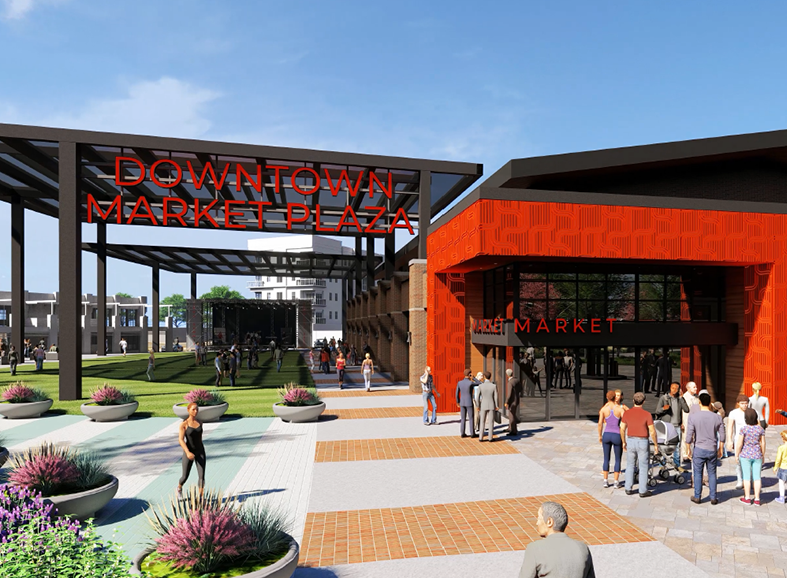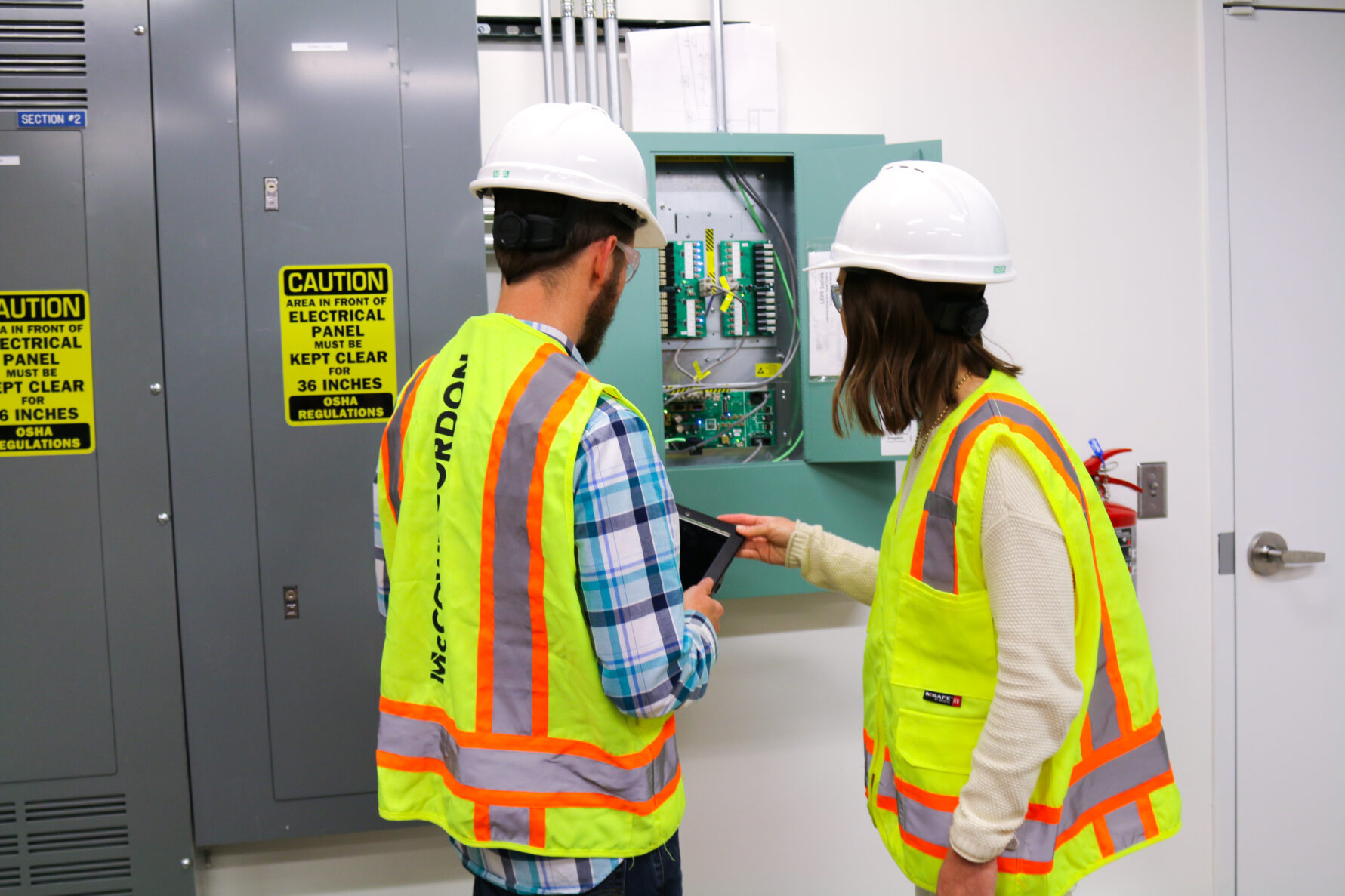7 benefits municipalities gain from public-private-partnerships

Public-private partnerships (P3), also referred to as PPP, developments have become increasingly popular to leverage upfront collaboration and increased efficiencies when developing community assets like libraries, parks and community and civic buildings. In fact, the Kansas City Metropolitan experienced positive economic impacts from P3 agreements in recent years. By utilizing the expertise, resources, and innovation of the private sector, city municipalities can optimize the delivery of critical infrastructure while mitigating risks to ensure the best possible outcomes for their communities. However, some municipalities are still unsure about the process and benefits of P3, so we break it down for you here and show examples of how it’s affected our municipality clients.
Read more to understand how we’ve partnered on civic P3 projects and the value they provided to our public partners.
In general, the team collaborations on P3 projects offer a range of benefits that help address various challenges and present unique opportunities including:
- Transfer of Risk to the Developer
- By partnering with a private developer, you can shift various construction and operational risks to their shoulders, allowing the city to focus on its core responsibilities while safeguarding taxpayers’ interests.
- Expanded investment in your project
- Public-private partnerships attract private sector investments that can significantly increase the available funding for your project, enabling you to achieve more ambitious infrastructure objectives without sacrificing the city’s budget.
- Innovative Funding Models
- Through P3s, you can access a wider array of funding mechanisms, such as revenue-sharing, tax credits, and grants, which can be creatively structured to secure the necessary financing for your project.
- Diverse Market Engagement
- Partnering with the private sector brings a diverse set of contractors, subcontractors, and suppliers into the project, fostering competition and ensuring that the best and most cost-effective solutions are implemented.
- Smarter Integration Across All Stakeholders
- Public-private partnerships encourage closer collaboration between the city, the private partner, and other stakeholders, leading to a more comprehensive approach that considers the long-term impacts and benefits for the community.
- Streamlined Project Development and Construction
- With a private developer involved, projects tend to move forward more efficiently, as the profit motive incentivizes adherence to deadlines and budgets, ensuring timely and cost-effective completion.
- Lower Costs
- P3s often result in reduced project costs as private firms are incentivized to find cost-effective solutions, deliver on time, and take on some financial risks, ultimately saving taxpayer dollars and city resources.
What is a Public Private Partnership?
Public-private partnerships typically use the design-build project delivery method where the architect, contractor and developer work as one team under one contract to provide a design-build finance model. This process guarantees cost and schedule and removes the risk from the owner. Because the entire team is hired under one contract, the process is more streamlined, resulting in a maximized budget and improved schedule, ultimately saving the owner time and money. The owner then repays the developer over time.
Considering other delivery methods?
Compare project delivery methods
When should a government entity use P3?
A P3 should be considered when the project they are pursuing will benefit the local economy and improve the community in terms of health, safety and amenities.
Can P3 be used for infrastructure projects?
Definitely. Several benefits of using the P3 model results in a more cohesive vision coordinated effort. Plus, available public budgets can be redirected to more strategic needs of the private entity.
P3 Projects in the Kansas City Metro
P3 development trends are ever-evolving – heavily influenced by economic, social and political factors. McCownGordon has worked with different developers and designers in P3 contracts and is here to help you plan for your next project. The following two examples offer insights into the value of using the P3 project delivery method for municipalities.
Overland Park Farmers Market | Overland Park, Kansas
The current Overland Park Farmer’s Market setup prevents year-round use with the open-air concept and decided to explore options that allows the market to stay open all year long. The City of Overland Park selected the team partnership of McCownGordon, PGAV Architects and Copaken Brooks to bring this development to fruition. The proposed $37 million reconstruction project includes enclosing the pavilion to make room for additional vendors, incorporating the Clock Tower Plaza, transforming Overland Park Drive into a community area, improving the entrance from Santa Fe Drive, and the addition of an 80,000 SF office building and 240-space parking garage.
Lee’s Summit Downtown Market Plaza | Lee’s Summit, Missouri
The expanding City of Lee’s Summit understands the need for community gathering spaces to enhance the downtown area and help the city thrive. A city focused on arts, culture and entertainment, the city partnered with LANE4 and Biederman Redevelopment Ventures to develop a market plaza in downtown Lee’s Summit. The new market features indoor and outdoor farmer’s market stalls, art installations, gather spaces, event spaces, boutique hotels, restaurants, retail spaces and multi-family housing.
For both projects, the investment in their downtown urban environment increases tax revenues and attracts more citizens, which benefits the community and enhances the city amenities.
McCownGordon is currently working with other municipalities to best understand their needs for future projects and how to best deliver the projects for them. When we are engaged early, we weigh the pros and cons of design-build, CMAR or with the city. P3’s are a solution for a lot of civic projects are leaning towards now because with the combination of public and private investments, both parties work together for the same goal, resulting in the best ROI for both the developer and the city.
Considering a P3 Project?




